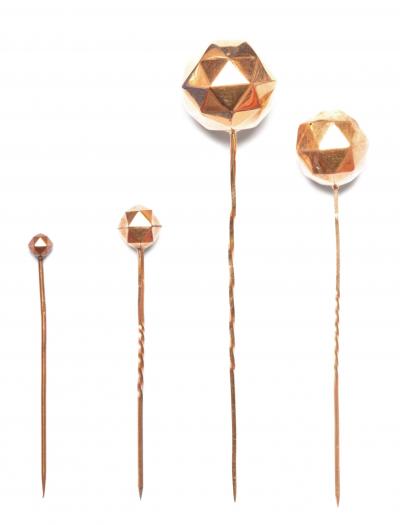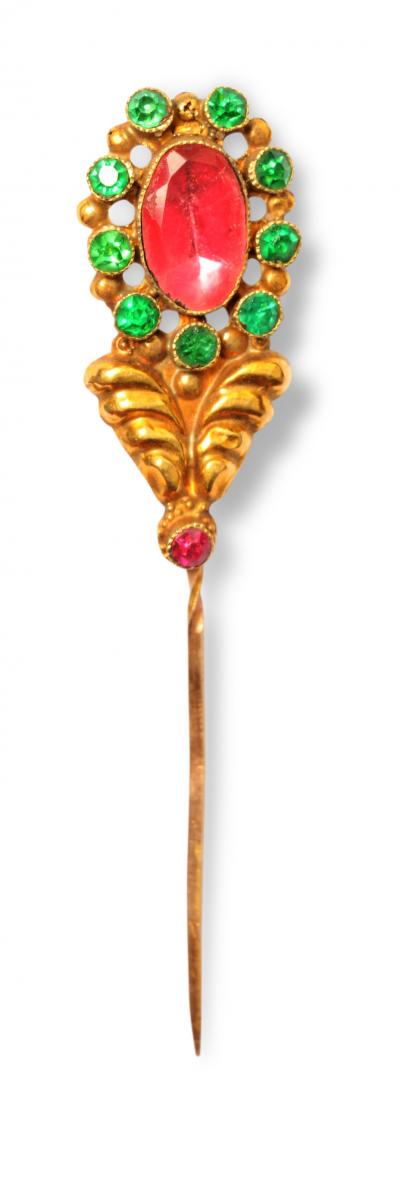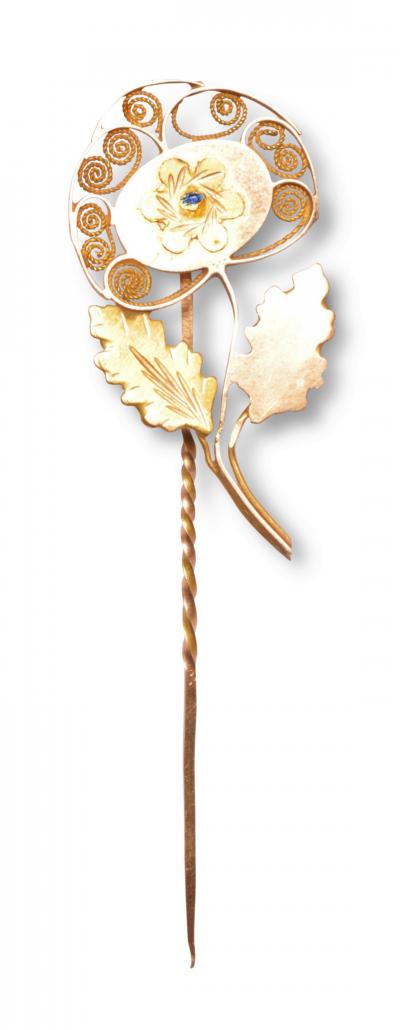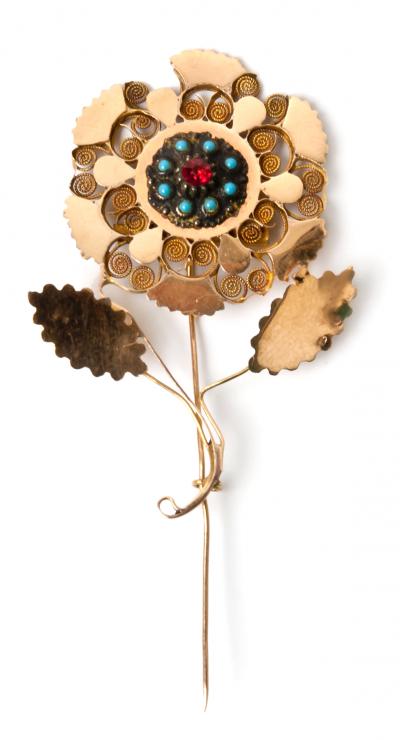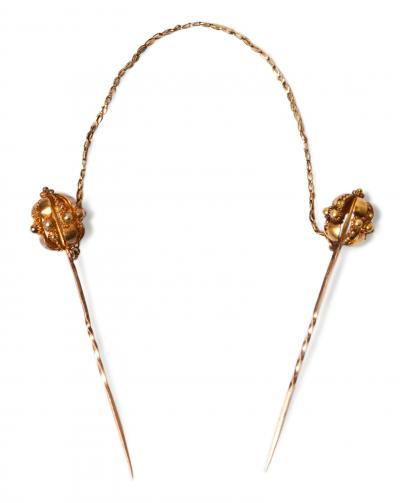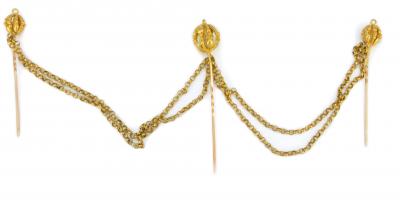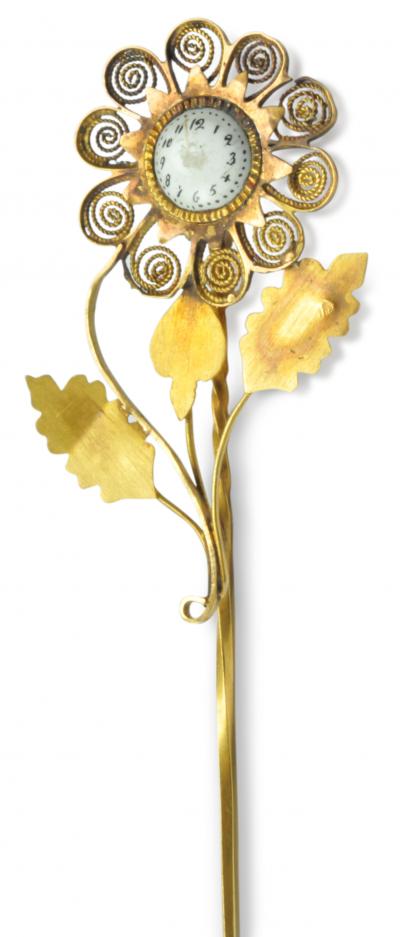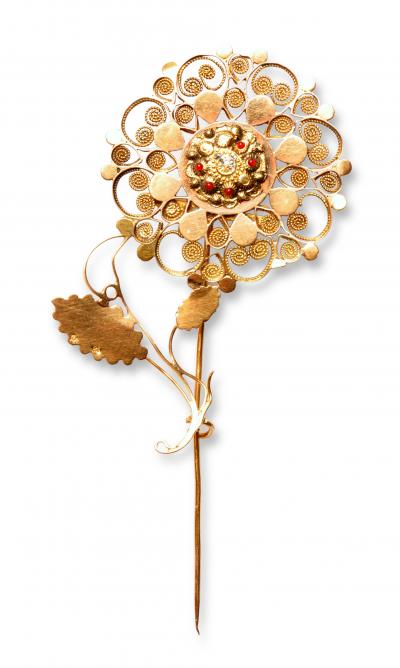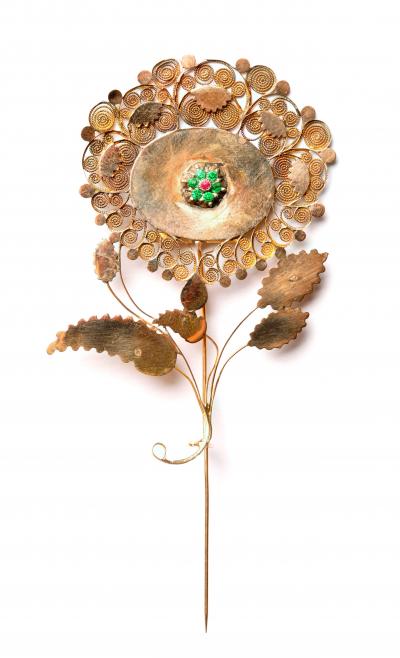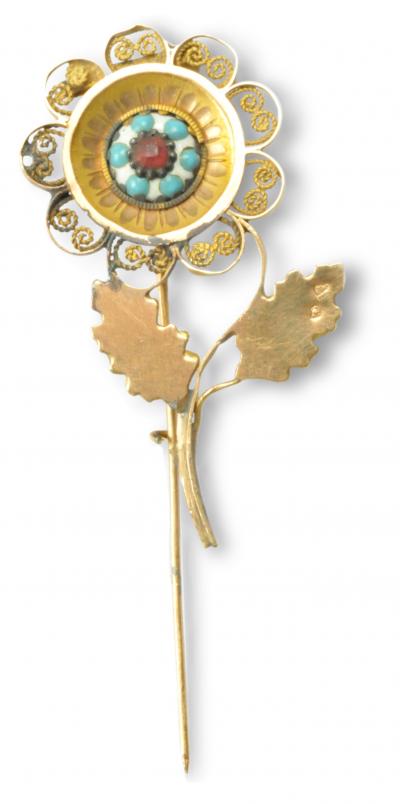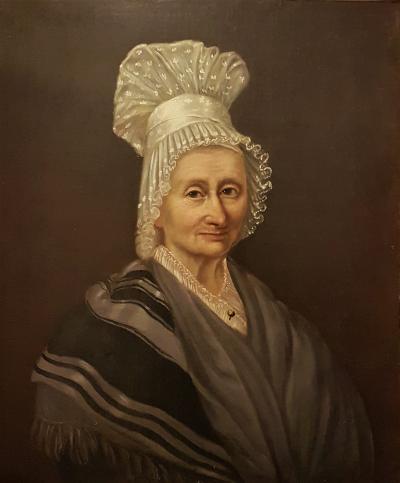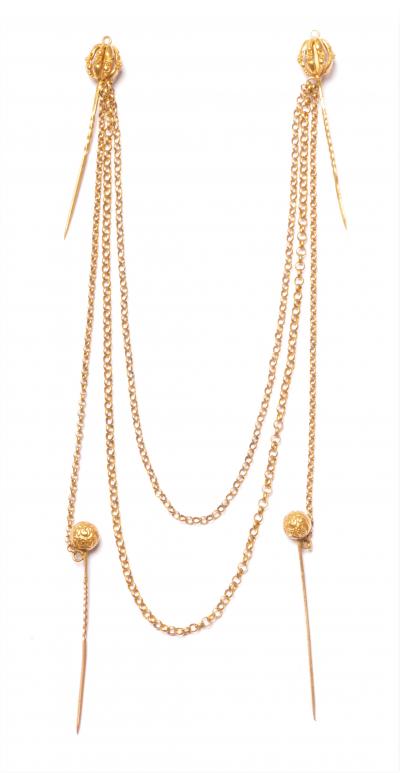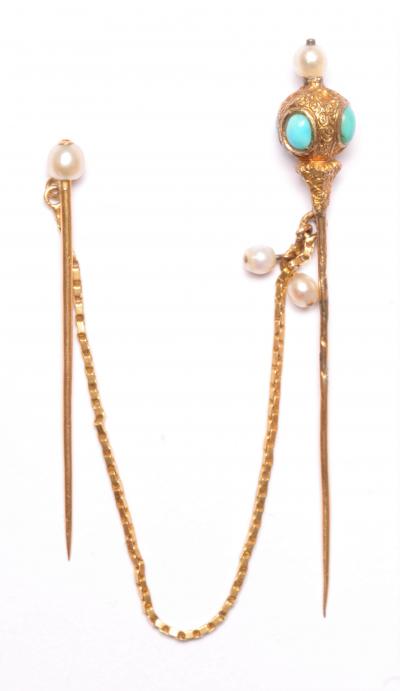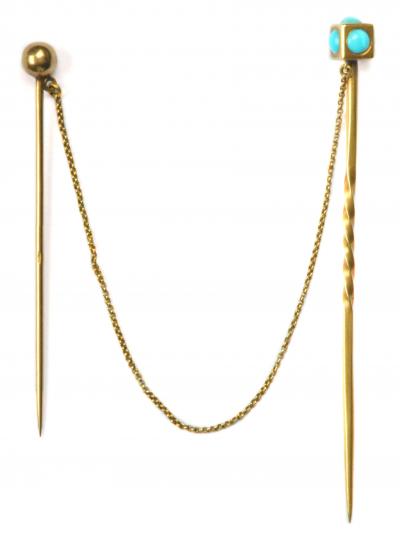|
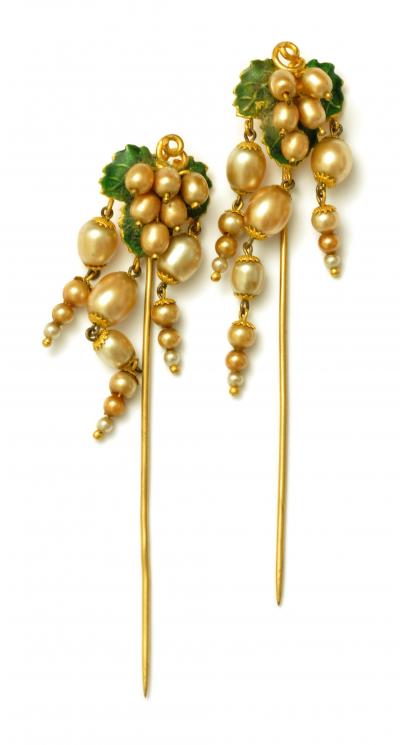
coiffe pins, brass,
glass pearls and enamel
|
By the mid eighteenth century, each region, town or even village had its own distinctive costume for the women and between 1800 and 1830 a great variety of coiffes (lace or linen head-dresses) appeared. The coiffes in Normandy were usually attached by two pins, sometimes three or four for the larger coiffes.
Note that in the case of pairs of pins, the two were rarely identical, often a larger and more decorative pin was worn at the front and a simpler one behind or underneath the coiffe. The pins were sometimes attached together with a fine chain. (Pairs of pins were not always for attaching coiffes; some were worn by men to fix their neckties).
Larger pins were also sometimes worn to hold closed the shawl or the light "fichu" worn by women, though in later years, after around 1850, a more traditional and less fragile brooch was used.
Coiffe pins adorned with a faceted spherical head are the most common in Normandy, followed by those with an enamelled pansy motif.
|
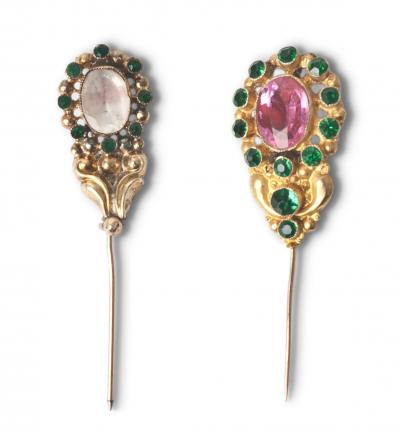
coiffe pins
gold and strass (Rhinestones)
|






